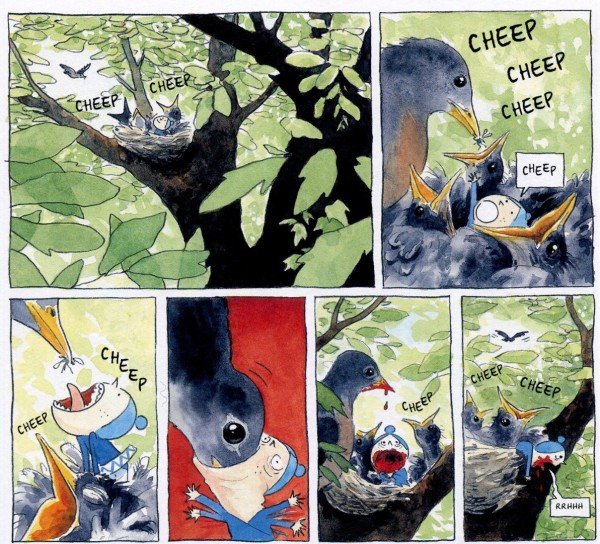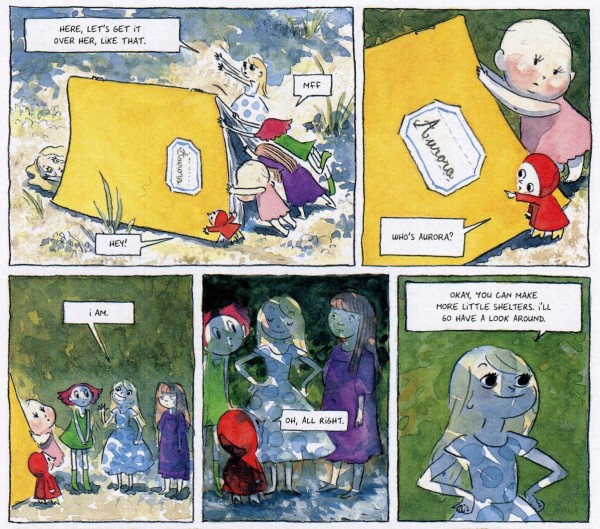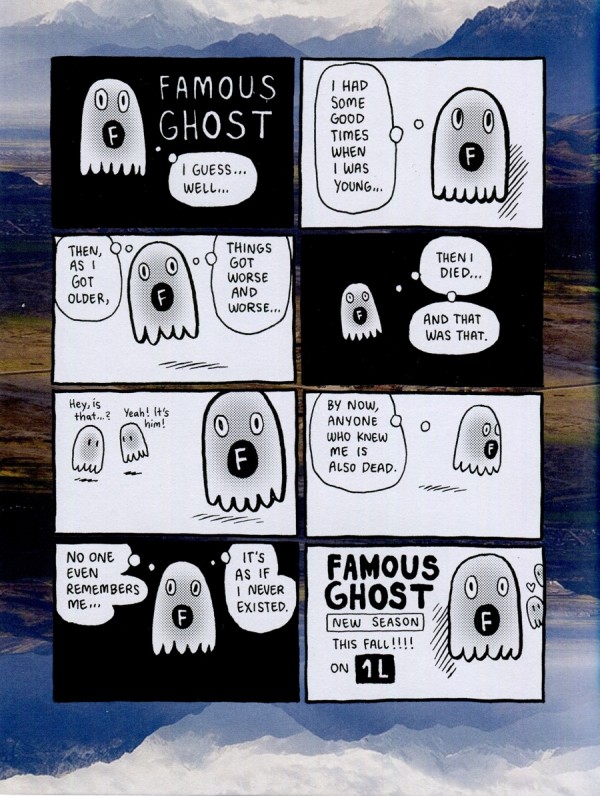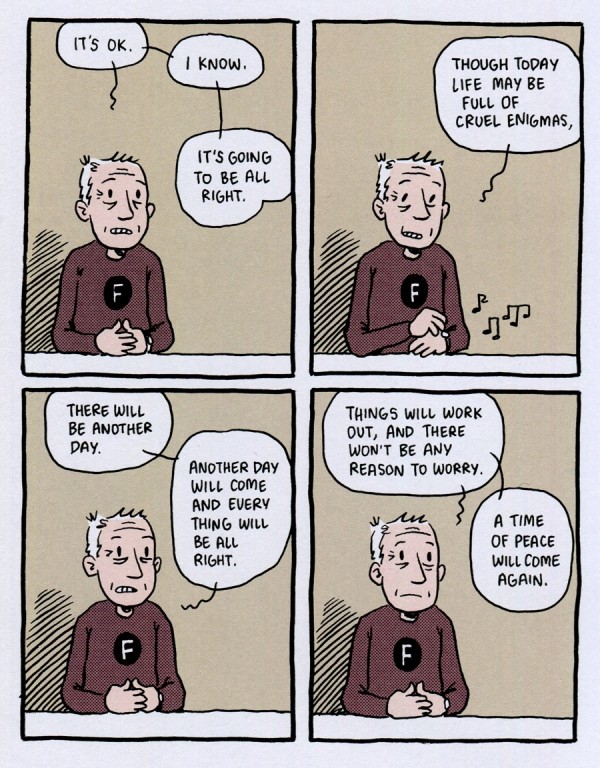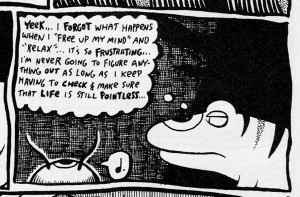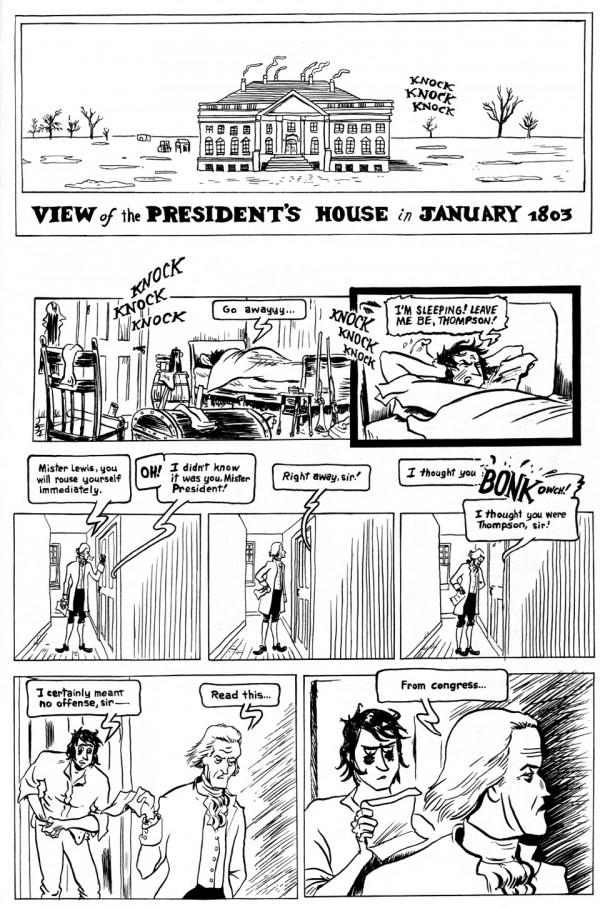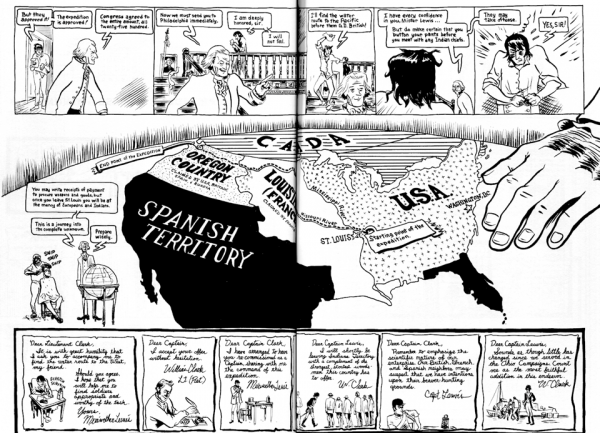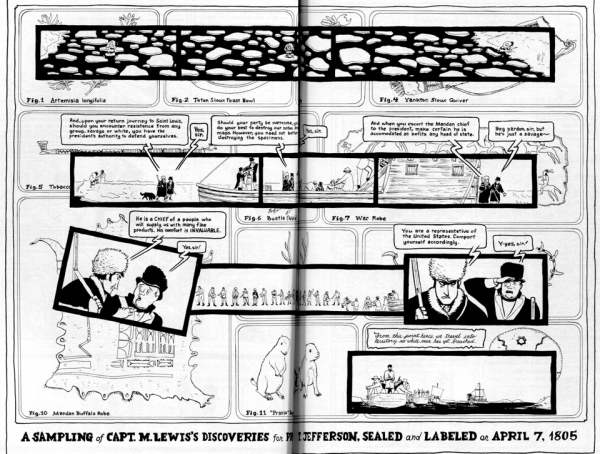What We’re Reading: Beautiful Darkness

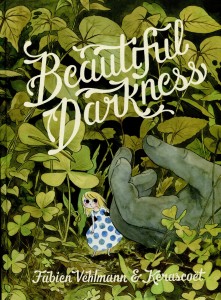 Beautiful Darkness by Fabien Vehlmann & Kerascoët (Drawn & Quarterly, 2014)
Beautiful Darkness by Fabien Vehlmann & Kerascoët (Drawn & Quarterly, 2014)
Beautiful Darkness (story by Fabien Vehlmann and Marie Pommepuy, art by Marie Pommepuy and Sébastien Cosset) is, as might be expected, both beautiful and dark. The story is somewhat familiar: a number of naive, childish people are lost in the woods, and as they struggle for food and shelter, hierarchies break out and grisly ends are met.
While this may sound like Lord of the Flies and its imitators, Beautiful Darkness is surprising and novel. Its ensemble cast are spritely, doll-like creatures, ranging in size from a berry to a squirrel, and they live in the woods around the corpse of a girl; some of them even live inside the body.
These grotesqueries are rendered by Pommpuy and Cosset (collectively known as Kerascoët) in lush watercolors, but while the forest environment is realistically rendered, in all its mud and maggots and fur and feathers, the tiny survivors look like they stepped out of a Saturday morning cartoon or children’s manga. I end up feeling strangely removed when, for instance, one of the cuties is eviscerated by a momma bird while imitating a chick.
These little people aren’t real, I think, and then I shiver, because that’s what these little people themselves think as they pluck the legs off beetles or steal each other’s food. The consistent pacing and clear storytelling only add to the detachment.
The truly insidious thing about Beautiful Darkness, though, is how it has infected my mind. It’s a quick read, and the ending is deliciously vengeful, but, like the action that takes place between the panels of all comics, there are a number of unanswered questions lurking behind the plot and between the scenes.
Some of these questions are straight out of the horror story toolbox: when the only vaguely heroic character (heroic inasmuch as we don’t see her doing anything too awful) rides off on her trained bird, the bird returns carrying the selfish and cruel warlord sprite and her entourage. Something happened, but the horror is left to our imaginations.
This is an obvious (and well done) case of implied action. A more subtle narrative is that of the dead girl. While she’s only shown as a corpse, doesn’t that imply that she was alive at point, perhaps at the beginning of the book? Looking back, readers see three of the sprites having hot chocolate and cake on a nice couch, disrupted by falling glop and catastrophe. The characters emerge into the woods, and behind them is the body. Were they literally living inside of her before she died? Did she contain that couch and those teacups and the stove that steamed the milk? We never see anything like that once the sprites set up in the woods; their homes and tools are all salvaged from the dead girl, her belongings, and whatever they can glean from the environment.
And the things they salvage: a fence of sharpened colored pencils, a notebook with the name “Aurora” on it (a name quickly claimed by the point-of-view sprite), scissors, and a pencil case. She was an artist.
And where did she come from, anyway? The nearest human abode, we find out, is a small cabin inhabited by a lone man who we see tinkering away and skinning rabbits. At first, I didn’t connect him with the dead girl at all. He’s never shown in mourning, nor is he acting the way a murderer might, trying to hide the body or assuage guilt. But as the only two humans in the book, one is forced to juxtapose them, and when you start looking for clues, they appear. What is he working on—is that a gun? And why does he have a broken doll in his house? And why does Aurora (the sprite; not the dead girl) love him and call him his prince in that final, haunting page?
It feels banal to try to understand the sprites and couch them in terms either symbolic or realistic. Are they Aurora’s urges, her muses, the aspects of her personality? The sprites’ perfect golden age defies realism—it seems foolish to ask how the girl’s body contained the teacups they drank from—but once you see the little people scrabbling in the dirt and slowly dying of poison, it’s impossible not to place them in the real world and ask how it happened.
But that’s the true power of Beautiful Darkness: it manages to tap into some deep, fairytale concerns but look at the real world with similarly doubting eyes. “Why do we do these things?” it asks. “How can this happen?”
What We’re Reading: The Wild Kingdom

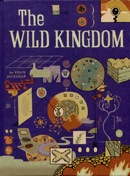 The Wild Kingdom by Kevin Huizenga (Drawn & Quarterly, 2010)
The Wild Kingdom by Kevin Huizenga (Drawn & Quarterly, 2010)
Kevin Huizenga’s The Wild Kingdom is a challenging book, and the challenges begin right up front in the introduction. Huizenga lists a Borges-like history of the material represented in the book, a barely described Wild Kingdom that he’s seeking to record: “All, therefore, that I proposed to do in forming the original collection during the fall of 1999 and early 2000 (self-published as Supermonster #12) was to select a few exemplary scenes closely connected with each other, and in which certain general laws appeared to reign independently of the individual peculiarities of each.”
This is, of course, what most storytelling is all about: taking a few exemplary scenes that are connected and constructing an order for them that relates some sort of meaning or theme.
Huizenga continues: “…I am fully aware that the collection is very far from being complete; there are many gaps which readers, however, may readily fill in for themselves. My chief aim, to place side by side types and sequences that might best serve as landmarks to the wayfarer on his or her onward path, has, I trust, been fulfilled.”
Here’s the other half of storytelling: the audience. In comics, these “gaps” in a story are quite literal—they’re the gutters in between every panel, which overtly demand that readers fill in the blanks.
So what are these particular scenes that Huizenga selects as exemplary? The first half of the book is nearly silent, focusing on Glenn Ganges, a nondescript man going through a somewhat nondescript day. It’s a common theme in comics: a white dude confronts the banality of day-to-day life. What separates Huizenga’s depiction of the content are the occasional shifts to focusing on the animals that exist on the periphery of Glenn’s life: a squirrel chases an apple, a pigeon eats fries and gets hit by a car, a hawk eats the pigeon. It’s unclear as to whether Glenn is aware of most of this, which lends a certain feeling of nature roiling just outside our everyday life, but it’s still not too far from, say, the workaday ramblings of Harvey Pekar.
But the story shifts suddenly, from black and white to color, from quiet to wordy, from a supposed real life to what might be a TV show:
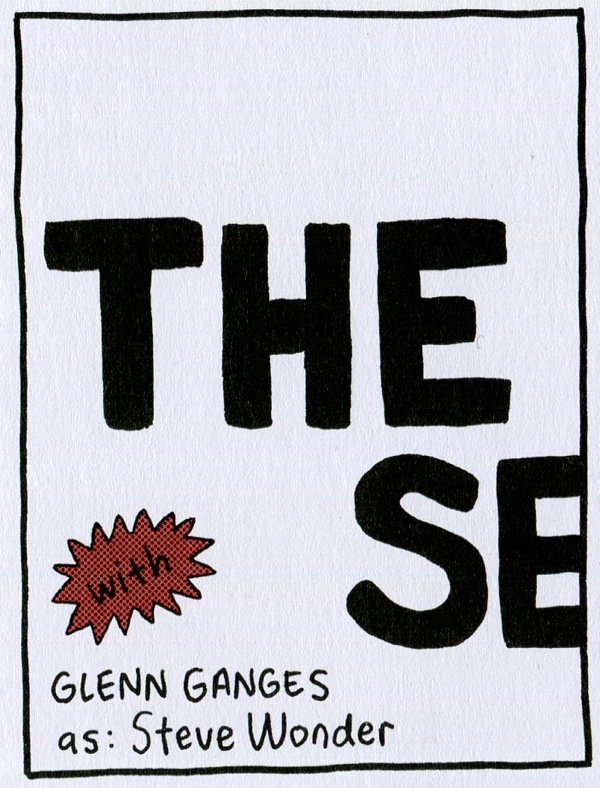
The scene changes come quickly after this. Some are loosely connected by repeated dialogue or similar-looking characters, but any singular narrative thread is hard to find. Product placements and testimonials abound. Is this comic-book-as-channel-surfing?
The gaps that Huizenga spoke of in the introduction are becoming bigger and harder to fill in. The Famous Ghost appears out of nowhere and disappears just as quickly, followed by more ads and testimonials. Then, with no introduction, come three pages of this man:
Is this the Famous Ghost, prehumous? The only link is the circled “F,” but comparing the man’s speech to the ghost’s, one an exhausted, forced optimism, the other a dawning, lost existentialism, is a bit heartbreaking.
Or maybe that’s just how I fill in the gaps.
The cuts continue to come quickly, charts and commercials juxtaposed with flashbacks to dead animals juxtaposed with text from Maurice Maeterlinck’s Life of the Bee. Are we meant to accept our consumerism as part of the Wild Kingdom? Or are the dying, the dead, and the ghosts supposed to serve as some sort of memento mori to draw our attention away from the people on TV?
The onslaught of images ends with a page of illegible charts that segues into a 15-page silent procession of causation that starts with the death of an eagle and ends with the destruction of the world. It’s an apocalyptic Rube Goldberg machine, with the charts perhaps representing the unknowable forces of the universe, the bad luck that hits us in the middle of the night and reminds us that, despite our science and our civilization, there will always be things we can’t control.
Huizenga, in the introduction, also mentions that “the more technical ideas introduced early on are also defined in a glossary at the end.” There is no glossary past his portrayal of the end of the world, so I have to assume that his silent ballet of destruction is the undisguised explanation of all those hints of danger and wild nature that seeded the first half of The Wild Kingdom.
And that’s where the book leaves off. The end. The ultimate end. Presented with such a blatant lack of control over our fates, how do we look at our lives?
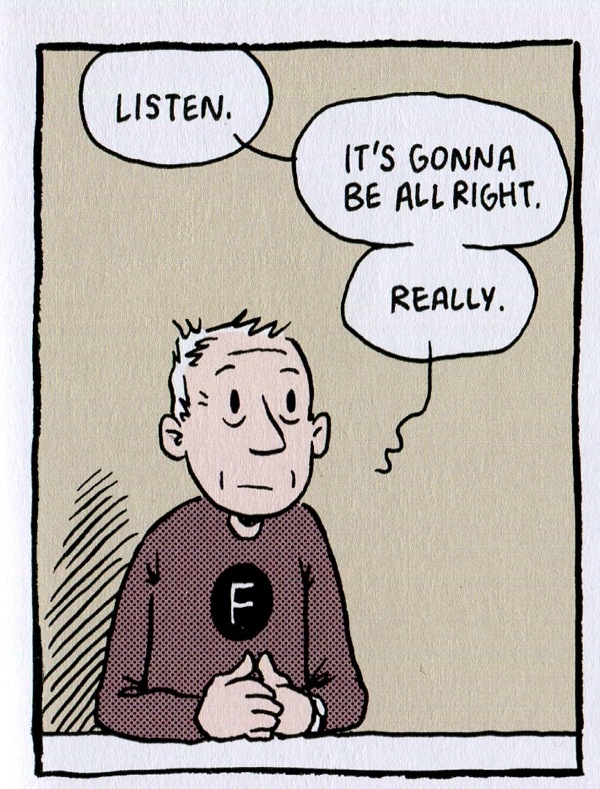

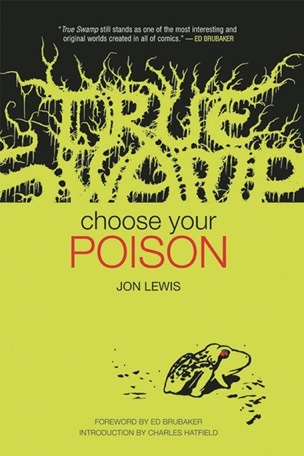 True Swamp by Jon Lewis (Uncivilized Books, 2012)
True Swamp by Jon Lewis (Uncivilized Books, 2012)
Maybe I’ve just been trained to think allegorically. When an author takes a bunch of symbolic pieces and clicks them together like a grand puzzle, I get a dose of catharsis that surpasses what I get when a story that is “only” well plotted.
There’s a good chance that this feeling is just a matter of pride in my ability to recognize what’s going on. If that’s true, I’d consider it an illness, and Jon Lewis’s True Swamp makes an excellent cure. It’s an obstinate, messy savior for those of us who have spent too long in the land of graphable rising action and perfectly timed plot twists.
Lewis’s protagonist is a frog named Lenny, but his being what he is shouldn’t affect anyone’s enjoyment of the book. I’ve seen some reviews lauding Lewis for keeping a healthy amount of animalistic characteristics attached to the various characters of the swamp. Sure, they eat live bugs, and they have a relationship with certain biological truths that’s a bit more intimate than might be the case for the average reader, but the animals of the swamp are more realistically human than most fictional characters. They lose themselves in thought, get depressed, make resolutions, and pursue hobbies; they act selfishly when everyone’s watching, and they achieve surprising moments of grace when no one’s around to notice.
Lenny’s a guy who gets by—scrapes by, sometimes—and it makes him an excellent point-of-view character. He’s plugged into the area he lives in, a community of birds, amphibians, and mysterious fairies, so readers can understand the basic facts of his life. However, he’s no seasoned veteran or wizened wizard; there’s a lot that he doesn’t understand and more that he just doesn’t care to interact with.
To me, this is a big deal in fantastic fiction. Too often, it feels like the world is all worked out: mapped, historically documented, roundly explained, and there’s usually one of the aforementioned veterans or wizards, flaunting their mysterious demeanor and doling out important exposition at key moments.

[the mole’s as close to a wizard as it gets in this book, and he’s just as screwed up as everyone else]
By diverging from that traditional display of world-building, Lewis presents us with an organic world that’s still a work in progress. As opposed to the metaphorical glass castles of Tolkien or the beautifully intricate machine that is Larry Marder’s Beanworld, True Swamp feels like an expansive backyard to stomp through and build forts in. Reading through it, I want to turn over rocks and tear down branches, and I want to come back months later to see how the seasons affect it.
Maybe I’m wrong and Lewis has True Swamp all planned out. (I’d be way impressed if that were the case.) Seeing Lewis work through the implications of his world is part of the fun, and that’s something I really like about comics that I don’t see as often in prose—this willingness to expose the process behind the work. You can flip from the first page to the last and see how much better Lewis has gotten at drawing, and you can flip past the last page to the reprint of Lewis’s original first issue of True Swamp that he chose to redraw.
You can watch his work grow legs, crawl from the murky water, and take its first ragged breath of air, and that’s something special. How about everyone else? Do you read the “paratext” that comes with books, such as introductions and author bios? If a novel contained the rough draft of a chapter or two, would that add value?

 Lewis & Clark by Nick Bertozzi (First Second, 2011)
Lewis & Clark by Nick Bertozzi (First Second, 2011)
Nonfiction comics are always a mixed bag, and my beef is that, for the lion’s share of them, the comic format is simply a novelty to be draped over some information; it’s a spoonful of sugar to take with your medicine. Instead of cursing the darkness, though, I’d like to hold a candle to one of my favorite examples of historical comics: Nick Bertozzi’s Lewis & Clark.
Never heard of it? It probably got lost in the waves of boring, educational comics I mentioned above. Amazon recommends it for ages 12-17, and the book’s cover blurb is a symptom of that kind of thinking; from the venerable Ken Burns, we see that this book is “[a] wonderful introduction to one of the most important expeditions and dramatic stories in American history.” It’s not the dramatic story—it only serves as an introduction.
Obviously, I think Lewis & Clark is a bit more than an introduction to the historical expedition. It’s closer to a biography of Captain Merriwether Lewis and a devastating portrait of manic depression. But it’s fun! And exciting! If someone told me a comic was “a devastating portrait of manic depression,” I’d steer clear, but I promise this book is worth it. The narrative is cunningly crafted, and Bertozzi takes advantage of the comic medium in ways both subtle and flamboyant.
A dry, didactic introduction to this important expedition might start with some historical context. It might establish what was happening in the United States and France or elucidate the borders of the fledgeling U.S. Instead, we’re introduced to the moody yet sedentary Merriwether Lewis. Bertozzi shows us right away who his story is focusing on.
He also isn’t lazy about setting the scene. A lesser cartoonist sticks a small narrative box in the corner above Lewis to tell us where and when we are. Bertozzi gives us a lovingly lettered postcard of the president’s home, simultaneously teaching us how he’s going to take us from scene to scene.
Bertozzi doesn’t skimp on the context and the elucidation, though—he doesn’t sacrifice history for character development. He just informs us in a way that expands on character. We don’t get a map; we get a close-up on a globe, Jefferson’s hand resting in the east. It’s a calm hand, but it’s also huge and a little threatening. In the background, Lewis gets a haircut. It’s a sad man who needs other men to prompt him towards grooming.
This foregrounding of Lewis’s personality over the intricacies of the expedition and the quirks of the period is illustrated quite literally in one case:
The facts and the methods, illustrated in the background, are interesting, but an explanation of what they mean might be more fitting for a textual analysis. It’s the personality and the human element that Bertozzi captures best with his thick, loose line. The pages above show him getting the best of both worlds: the collection and display of objects and facts, like a comic book Wunderkammer, along with the primal emotion that cartooning does so well.
While Lewis is central to the arc that Bertozzi’s constructed, everyone gets a bit of definition, and it’s Bertozzi’s familiarity with the tools of comic storytelling that make this possible. For instance, this book is a showcase for thoughtful, deliberate lettering. Each specific language is rendered in a different style, intuitively signalling the change in tongue without needing intrusive footnotes.
The biggest evidence for this being the story of temperamental Merriwether Lewis’s comes about a third of the way through the book with the first sighting of the Pacific. It’s given a bit of visual weight, but not more than any other location the Corps of Discovery visits. Two pages are devoted to Sacagawea’s peaceful exploration of the beach, but Lewis has an entirely different reaction: the achievement sends him into another deep malaise similar to how he was when the book began.
Why? What’s the source of Lewis’s emotional rise and fall? The people around him call him “temperamental” and “dark,” and Bertozzi is smart enough to let that stand as the sole diagnosis. His moods are mysterious and sudden, and the most definition they get is when Bertozzi illustrates them as ominous shadows just out of reach.
